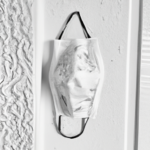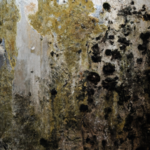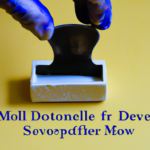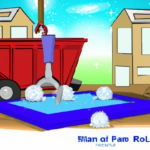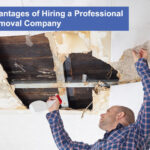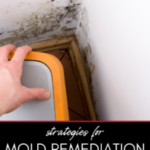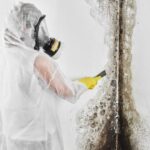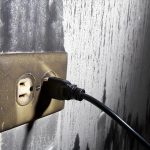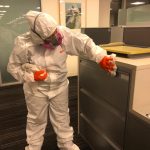In this article, you will discover a variety of effective methods for mold remediation. Mold growth can be a frustrating and potentially dangerous issue in any home or building. However, with the right techniques, you can successfully eliminate mold and prevent its reoccurrence. From identifying the source of moisture to implementing proper ventilation and utilizing appropriate cleaning solutions, this article will provide you with the knowledge and guidance you need to effectively tackle mold problems. Don’t let mold take over your space – read on to learn the best methods for mold remediation.
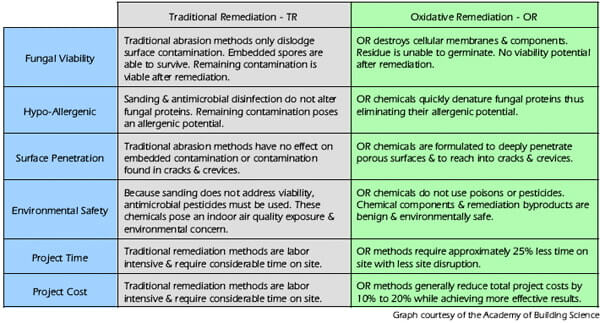
This image is property of biotekhelp.com.
Table of Contents
ToggleUnderstanding Mold
Types of mold
Mold comes in various types, but the most common ones found in homes include Aspergillus, Cladosporium, Penicillium, and Stachybotrys chartarum (also known as black mold). Each type of mold has its own characteristics, appearance, and preferred growth conditions. It’s important to be aware of the types of mold that can be found in your home to effectively address the issue.
Signs of mold infestation
To identify a mold infestation, keep an eye out for signs such as a musty odor, visible mold growth on surfaces, discoloration of walls or ceilings, and the presence of mold spores in the air. Mold is more likely to thrive in areas with high moisture levels, so pay close attention to damp areas such as basements, bathrooms, and kitchens.
Health risks associated with mold
Mold can have serious health implications, especially for individuals with allergies, asthma, or compromised immune systems. Prolonged exposure to mold spores can trigger allergies, respiratory problems, skin irritations, and even infections. It’s important to promptly address any mold growth to ensure the well-being of everyone in your home.
Causes of mold growth
Mold requires specific conditions to grow, primarily moisture, a food source (such as organic materials like wood or drywall), and warm temperatures. Common causes of mold growth include high humidity levels, water leaks or flooding, condensation on windows or walls, and poor ventilation. Understanding the underlying causes of mold growth is crucial in preventing its recurrence.
Preventing Mold Growth
Controlling humidity levels
Maintaining appropriate humidity levels in your home is key to preventing mold growth. Aim for humidity levels below 50% to discourage mold from thriving. Consider using dehumidifiers in areas prone to excess moisture, such as basements or bathrooms, to help maintain optimal humidity levels.
Condensation prevention
Condensation can contribute to mold growth, particularly in areas with inadequate ventilation. Prevent condensation by insulating windows and pipes, using exhaust fans in bathrooms and kitchens to remove excess moisture, and ensuring that your home is well-ventilated.
Proper ventilation
Proper ventilation is crucial in preventing mold growth. Ensure that your home has adequate airflow by using fans, opening windows, and utilizing air conditioning or heating systems that incorporate air exchange. This helps to remove moisture and maintain a healthy indoor environment.
Routine inspections and maintenance
Regular inspections of your home can help identify potential moisture issues or areas with mold growth. Be proactive by routinely checking for leaks, water damage, or signs of mold, and promptly addressing any concerns. Regular maintenance, such as repairing plumbing leaks or replacing worn-out seals, can go a long way in mold prevention.
Identifying Mold Infestation
Visual inspection
A visual inspection is the first step in identifying a mold infestation. Look for visible mold growth on walls, ceilings, floors, and other surfaces. Pay attention to any discoloration or unusual spots, as they may indicate the presence of mold. Remember to thoroughly inspect areas prone to moisture, such as bathrooms, basements, and crawlspaces.
Mold testing
If you suspect a mold infestation but are unable to visually confirm it, mold testing can be a helpful option. Mold testing involves taking air or surface samples to measure the concentration of mold spores present. Professional mold testing can provide accurate results and help determine the appropriate course of action for mold remediation.
Identifying hidden mold
Mold can often hide in hard-to-reach or hidden areas, such as behind walls, under flooring, or within HVAC systems. Look for signs of hidden mold, such as a musty smell, water stains, or warped surfaces. If you suspect hidden mold, consider consulting a professional for further investigation and remediation.
Safety Precautions
Wearing protective gear
When dealing with mold, it’s essential to protect yourself and minimize exposure to mold spores. Wear personal protective equipment (PPE) such as gloves, goggles, and masks to shield yourself from direct contact or inhalation of mold spores. Additionally, ensure that the area being remediated is well-ventilated to prevent the buildup of airborne mold particles.
Sealing off the affected area
To prevent the spread of mold spores to unaffected areas, it’s important to seal off the affected area properly. Use plastic sheeting and tape to create a containment barrier, ensuring that air cannot flow freely between the remediated area and the rest of the space. This containment will help minimize the risk of cross-contamination.
Limiting exposure to mold spores
During mold remediation, limit the number of people present in the affected area to reduce the risk of exposure to mold spores. If possible, relocate vulnerable individuals, such as those with allergies or respiratory conditions, to a different area until the remediation is complete. Remember to adhere to proper hygiene practices, such as washing hands and changing clothes after being in contact with mold-infested areas.
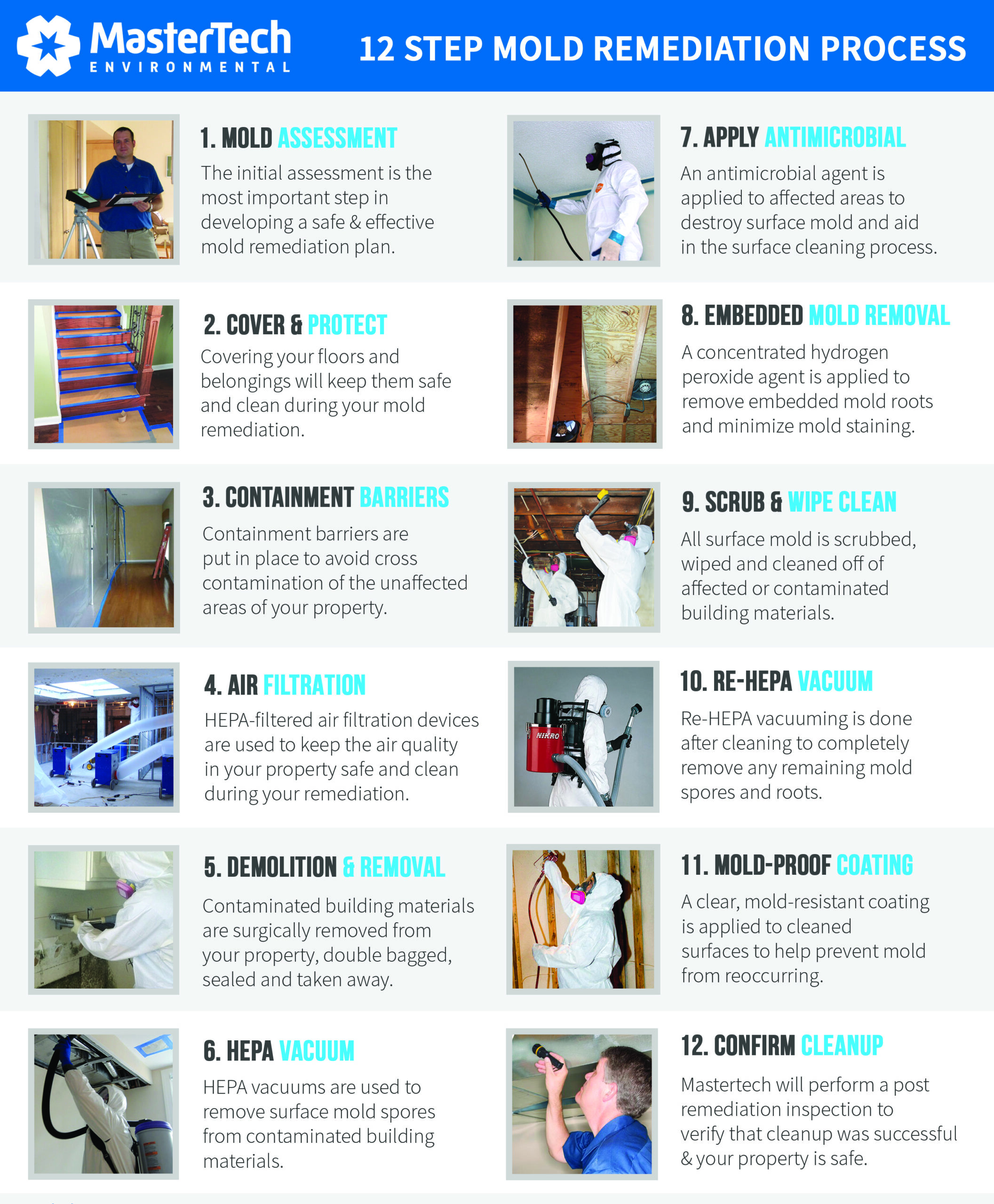
This image is property of mastertechmold.com.
Removal of Mold
Small-scale mold removal
Small-scale mold infestations can often be addressed by homeowners following proper safety protocols. Remove mold from non-porous surfaces using a mixture of water and detergent or a commercial mold removal product. Ensure that the affected area is thoroughly cleaned, and dispose of any contaminated materials safely.
Large-scale mold removal
For larger infestations or when dealing with hidden mold, it is advisable to hire professional mold remediators. They have the expertise, equipment, and experience to safely and effectively remove mold from your home. Professional mold remediation can ensure that the entire mold infestation is properly addressed, reducing the risk of future problems.
Using mold removal products
Various mold removal products are available on the market, including bleach, hydrogen peroxide, and specialized mold removers. When using these products, always follow the manufacturer’s instructions and take proper safety precautions. Remember that some products may be more suitable for specific surfaces or types of mold, so choose accordingly.
Hiring professional mold remediators
If you are unsure about how to address a mold infestation or if the problem is extensive, it is highly recommended to hire professional mold remediators. These professionals have the necessary knowledge, equipment, and experience to effectively remove mold and prevent its recurrence, ensuring the safety and well-being of your home.
Cleaning Mold-Affected Surfaces
Non-porous surfaces
Non-porous surfaces such as glass, metal, or tiles are easier to clean and less likely to harbor mold. Use a mixture of water and detergent or a commercial mold cleaning product to scrub the affected surfaces thoroughly. Remember to wear appropriate protective gear and properly dispose of any cleaning materials or contaminated waste.
Porous surfaces
Mold can be more challenging to remove from porous surfaces such as wood, drywall, or fabrics. In some cases, it may be necessary to remove and replace the affected materials to ensure complete mold removal. Consult a professional if you are uncertain about the best course of action for cleaning or removing mold from porous surfaces.
Cleaning products and techniques
When choosing cleaning products for mold remediation, opt for environmentally friendly and non-toxic options whenever possible. Avoid using bleach on porous surfaces, as it can be ineffective and potentially damage the material. Instead, consider using specialized mold cleaning products or natural alternatives such as vinegar or hydrogen peroxide. Follow the product instructions and use proper cleaning techniques to effectively remove mold and prevent its recurrence.
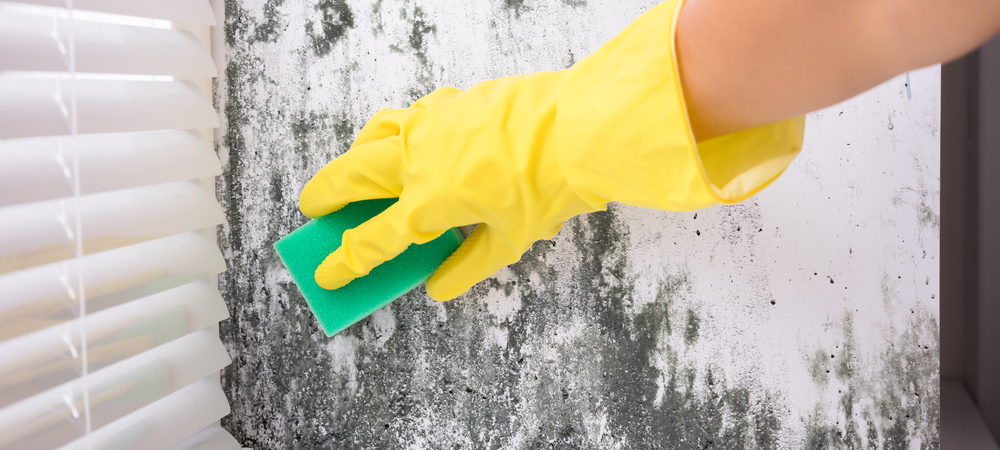
This image is property of sp-ao.shortpixel.ai.
Addressing Mold in HVAC Systems
Air duct cleaning
Mold can easily spread through HVAC systems, potentially affecting the air quality in your home. Regularly inspect and clean your air ducts to prevent the accumulation of dust, debris, and mold. Consider hiring a professional HVAC technician to perform a thorough cleaning and ensure the system is mold-free.
Replacing air filters
Air filters play a crucial role in maintaining clean indoor air quality. Regularly replace your air filters as recommended by the manufacturer to prevent mold and other contaminants from circulating through your HVAC system. High-quality air filters can effectively capture mold spores and minimize the risk of mold growth.
Preventing future contamination
To prevent mold from re-contaminating your HVAC system, take proactive measures such as maintaining proper humidity levels, addressing any moisture issues promptly, and regularly checking for leaks or water damage. Additionally, ensure that the system is properly insulated and well-ventilated to minimize the risk of mold growth.
Preventing Mold Recurrence
Addressing underlying moisture issues
To prevent mold from recurring, it is essential to address any underlying moisture issues in your home. Repair leaks, address plumbing issues, and ensure that your home is properly waterproofed. Regularly inspect areas prone to moisture, such as basements or bathrooms, and take the necessary steps to keep them dry and well-ventilated.
Proper ventilation and air circulation
Proper airflow and ventilation are key in preventing mold growth. Use exhaust fans in bathrooms and kitchens to remove excess moisture and ensure that fresh air can circulate throughout your home. Open windows when weather permits and consider using fans or air purifiers to improve air circulation.
Regular cleaning and maintenance
Regular cleaning and maintenance of your home can help prevent mold growth. Keep surfaces clean and dry, promptly address spills or water damage, and regularly inspect areas susceptible to mold, such as shower curtains or window sills. By maintaining a clean and dry environment, you can significantly reduce the risk of mold growth.
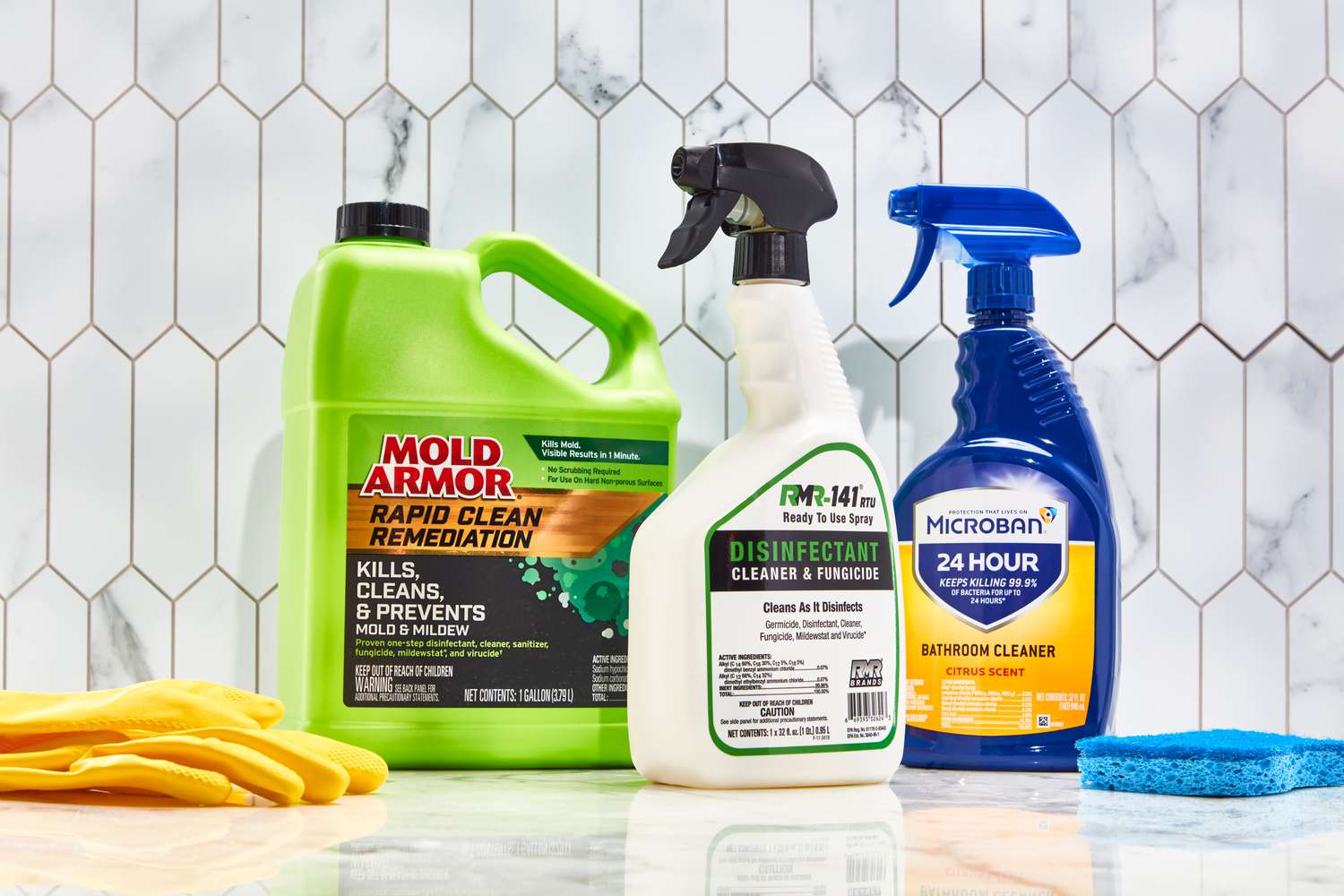
This image is property of www.thespruce.com.
Disposing of Mold-Contaminated Materials
Safe handling and containment
When disposing of mold-contaminated materials, it’s crucial to handle them safely to prevent further spread of mold spores. Place the materials in sturdy plastic bags or containers, ensuring that they are tightly sealed to contain the mold. Use caution when handling and avoid shaking the materials, as it can release mold spores into the air.
Proper disposal methods
Dispose of mold-contaminated materials according to local regulations and guidelines. In many cases, double-bagging the materials and labeling them as “contaminated” is required. Contact your local waste management or health department for specific instructions on how to dispose of mold-contaminated materials properly.
Hiring Professional Mold Remediation Services
Benefits of professional services
hiring professional mold remediation services offers several advantages. Professionals have the knowledge, experience, and specialized equipment to effectively assess, contain, and remove mold from your home. They can properly address hidden mold, mitigate the risk of cross-contamination, and ensure that all affected areas are thoroughly remediated.
Choosing a reputable remediation company
When selecting a mold remediation company, it’s vital to choose a reputable and experienced provider. Research companies in your area, ask for recommendations, and check reviews or references. Ensure that the company is properly licensed, insured, and follows industry standards and guidelines for mold remediation.
Evaluating cost and timeframe
Cost and timeframe are important factors to consider when hiring professional mold remediation services. Request multiple quotes from different companies to compare costs and services offered. Additionally, discuss the estimated timeframe for the remediation process to ensure it aligns with your needs and schedule.
In conclusion, understanding mold, preventing its growth, identifying infestations, taking safety precautions, removing mold effectively, addressing mold in HVAC systems, preventing recurrence, disposing of contaminated materials, and hiring professional remediation services are all essential steps in successfully remedying and managing mold issues in your home. By following these guidelines and taking appropriate actions, you can create a healthier and mold-free living environment for you and your loved ones.
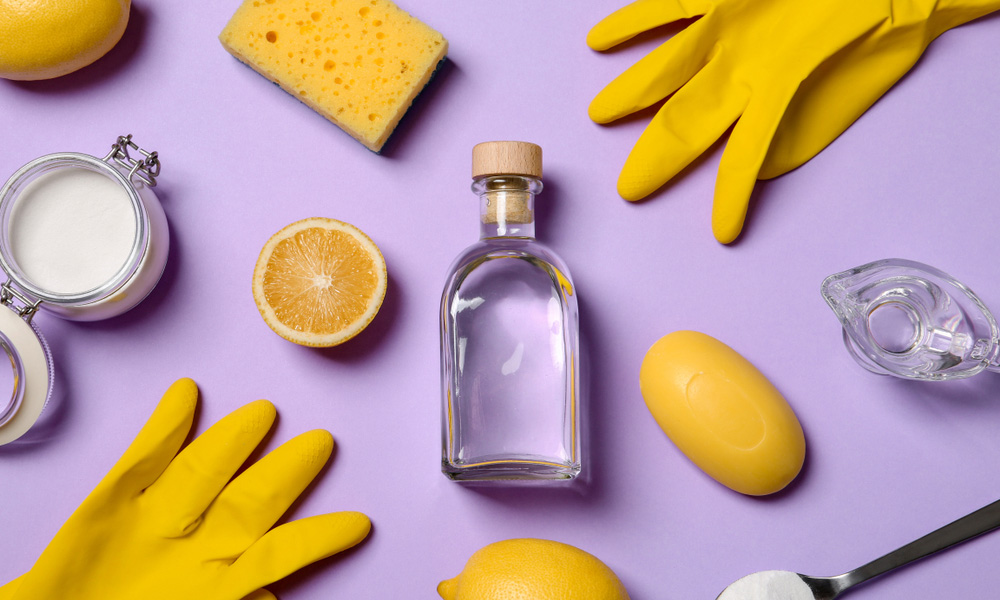
This image is property of www.ecofmr.com.



